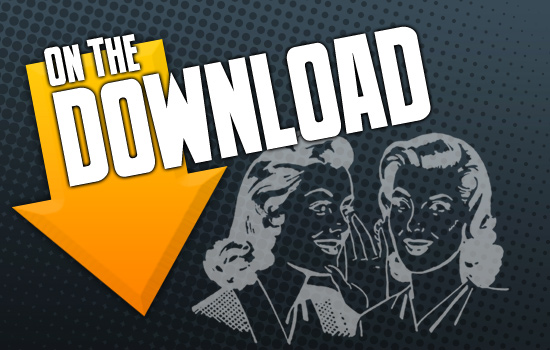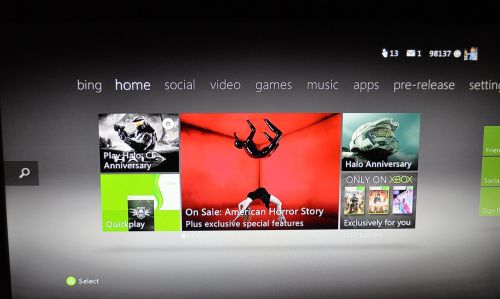

Sitting in a dark room surrounded by next generation hardware, I was an eager 25 year old journalist at my first "big" gaming event. It was a month before the launch of the Xbox 360 and I was talking to Greg Canessa (who now works for Blizzard) about something he was heading up called Xbox Live Arcade. He showed me one of my favorite games of all time, Joust, remade in HD. "We’ll be putting out games like this for around $5," I was told. It was to be remakes of classic titles mixed with original games like Geometry Wars. Microsoft wanted something for people to do in between the big releases, something to keep them coming back to their consoles. At that moment I instantly knew Xbox Live Arcade was going to catch on.
Over the years Xbox Live Arcade has gone through an evolution. While it started as remakes, re-releases, and every so often an original title it’s now evolved into something different. It’s now a service filled with games that aren’t quite big enough for a full retail product. Titles like Alan Wake’s American Nightmare, The Walking Dead, and I Am Alive stick out. Titles with high production values, but not necessarily long play times. Sure we get a gem every once in awhile that reminds us of what the service used to be - hello Fez - but it feels like XBLA has lost its identity.
That fateful day almost 7 years ago. Greg Canessa demoing XBLA in October 2005.
There was a time when developers were climbing over each other trying to get on the service, all competing to be one of the games Microsoft hand picks for Xbox Live Arcade. Now though, the message out of the industry is much less clear. In a recent interview with Game Informer, Robot Entertainment’s Patrick Hudson talks about how Orcs Must Die! 2 won’t see the light of day on the 360 because of the poor showing the first game had on the platform. This wasn’t because it was a bad game or didn’t have broad appeal; it sold phenomenally on the PC. No, instead it seems the failure was in part due to Microsoft’s requirements they set up for the service. We’ve heard it time and time again, the certification process is long and tedious - and for some - the payout just doesn’t seem to be worth it.
More recently the blame for the newest, and possibly the biggest problem for Xbox Live Arcade, falls squarely on Microsoft’s shoulders thanks to a horrendous dashboard redesign that has put everything but gaming at the forefront of your console. The 360 has turned into an all-in-one device showcasing movies, music, sports, and other content. Don’t get me wrong, these features are great, but Microsoft has lost sight of what got the 360 into a position to have the user base to support these features.

This is the missed opportunity.
A developer has one shot at stardom on the new dashboard: launch week. If they're lucky, they'll have their title displayed predominately in the middle of the dashboard with a nice big graphic. After that, the game will fall into obscurity as it's buried behind colored rectangles and tabs of content. David Johnston is the creator of The Adventures of Shuggy, a slick little arcade puzzler that came out last year on XBLA to decent reviews but poor sales. According to David he started the game in 2007 with hopes of getting on XBLA, but he "thinks it was already starting to change at that time, there’s been much more of a shift towards AAA style titles appearing with all the focus being on them." Sadly for Shuggy, it launched the same week as Magic: The Gathering which got all of the dashboard coverage. "The titles which don’t get that support seem to be fading into obscurity," David says.
How long does it take to navigate to The Adventures of Shuggy on the new dashboard? 26 seconds. I’d called that obscured. And that’s probably on the high side, the game starts with an "A."
The problem now with XBLA’s shift in identity isn’t from the quality of games listed on the service, but rather how the service handles everything it has on it. By my count, using the official website - Microsoft is close to 500 games listed under the "Arcade" banner. Perhaps it’s time for Microsoft to swallow it’s pride a bit and look at what the biggest online digital stores are doing out there on the PC - Steam and GOG.com come to mind. Steam, for example, features 1500 games under $10.
You are immediately greeted with games, sales, and what friends are playing when you log into Steam.
Both of these platforms utilize weekly themed sales that constantly bubble content to the top of the service and list it with the new releases. Microsoft does this on occasion, but the inconsistency and placement seems off. The effect of these sales don’t seem to have the same weight behind them as the Steam sales do. One Co-Optimus editor even commented that it seems the same 10 games are always on sale on XBLA.
Perhaps the biggest misstep is the lack of social integration. You’ve got a friends list full of gamers just like you, why not utilize features like wishlists, gifting, and timelines of what people have been playing and/or purchasing. All features that are prominent in Steam.
Maybe it’s the lack of competition that has driven the service into such an obscure state. With such a tightly controlled group of games, and so many retail releases, the market for these games simply isn’t what it used to be. For every Trials HD, which has sold over 1.5 million - you have an Adventures of Shuggy that struggles to find its ground with less than 7k in sales. There’s a huge gap between the top and bottom with almost no middle ground.
One final speculation in all this, might place the blame on something nobody has control of - time. The simple ebb and flow of what gamers are putting their money where has changed. The early adopters, the core gamers - they’ve moved on from the consoles and back to the PC for smaller, bite sized games. There’s an absolute revolution going on in the world of PC gaming when it comes to self publishing and Indie gaming. The twilight of this console generation is still seeing the big AAA releases, but XBLA and PSN are no longer the best place to ply your wares as a smaller developer.
But these trends are cyclic, and it’s a sure bet as soon as Microsoft or Sony releases new hardware, the core gamers will come back in troves gobbling up every gaming morsel available to them - lets just hope it’s not hidden behind a screen full of ads for other content.